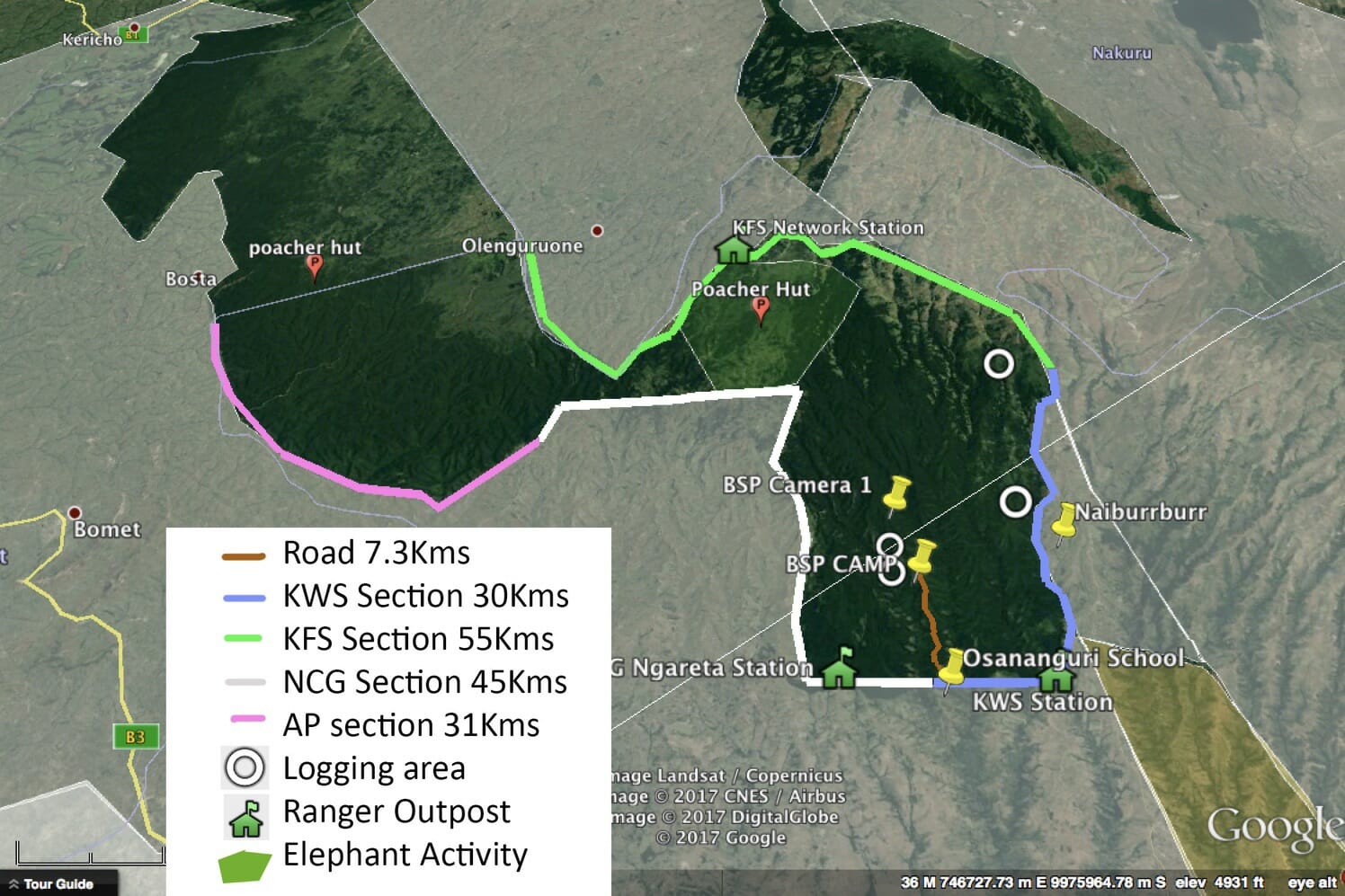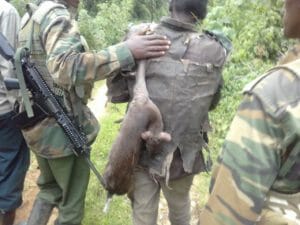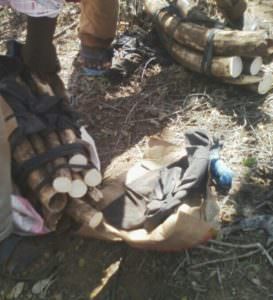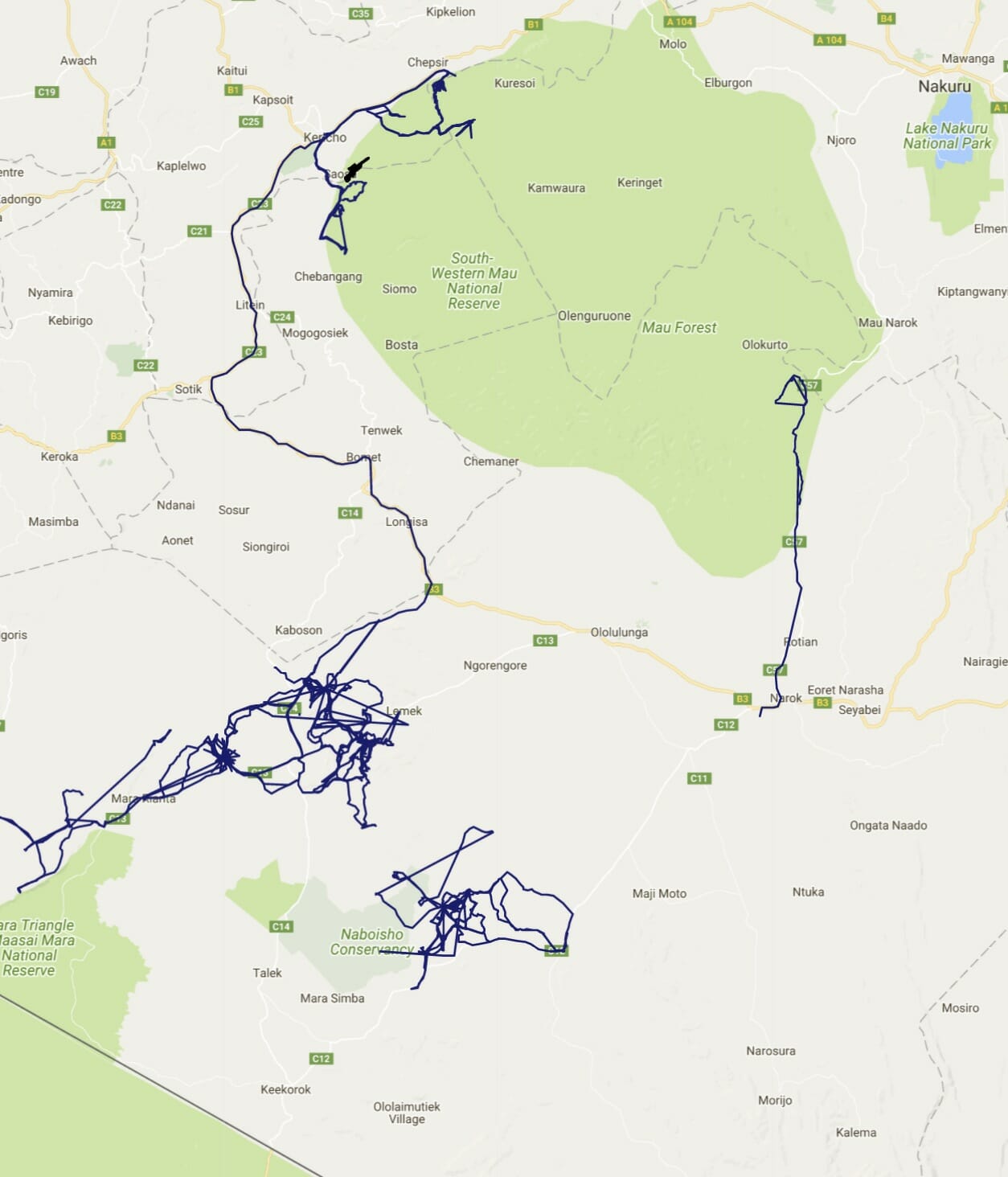As always, Mara Elephant Project rangers were extremely busy in the fourth quarter of 2017 protecting elephants to conserve the greater Mara ecosystem. We sent a MEP rapid response unit into the Mau Forest, which is a critically endangered habitat, not only for elephants, but also the mountain bongo. The information collected by MEP rangers while on the ground confirmed a massive amount of illegal logging and poaching happening in the forest.
One of the maps demonstrating the Mau Forest marking poaching and logging sites.
Along with our existing partners Kenya Forest Service (KFS), Narok County Government (NCG) and Kenya Wildlife Service (KWS), MEP has started to root out poachers in the Mau Forest and shut down illegal logging operations. We spent countless hours collecting information on the two best collaring prospects for the MEP collars and were happy when both Nancy and Wilber were successfully collared.

MEP rangers collaring Nancy in the Mau Forest.

We had many significant arrests for both ivory and other illegal activity in the fourth quarter of 2017. We arrested one suspect in the Mau Forest with bush meat (pictured left), another suspect was arrested in Transmara with lion claws. There were six suspects arrested by KWS with a total of 57 kg of ivory recovered (pictured right) based on MEP intelligence.

Another big change in the last quarter of 2017 is how rangers are reporting their movements, animal sightings and more. We started using the Domain Awareness System (DAS) for reporting, which is giving us more comprehensive ranger patrol reports than the WILD app. Although we are still using WILD to report ranger tracks, DAS now is used to report daily incidents.
Example DAS Report November
As a result, in November and December, we were able to compare similar numbers when it came to ranger patrol tracks. For the month of November, MEP rangers covered a distance of 999.5 km on foot, 1,724 km by car and 266 km by motorbike. Now, we can compare this directly to December, where MEP rangers covered a distance of 1,009 km on foot, 2,889 km by vehicle and 434.5 km on motorbike.

MEP ranger tracks in December.
We are rewarding ranger teams that cover the most distance in a month, and in November the Enkutoto team covered the largest distance with 248.2 km and in December the Munyas team covered the most distance with 287.2 km. The Enkutoto team was awarded as the best team of the quarter because they covered the largest total distance of 707 km on foot.
We have also streamlined the process with ranger teams for wildlife sightings by having them send in pictures via their mobile phones daily versus bi-monthly as we previously did. In November, rangers recorded 1,106 elephants total and the team in Olkinyei Conservancy recorded the most sightings with 505 elephants. In December, rangers recorded 455 elephants and the Olkinyei Conservancy team again recorded the most sightings with 176 elephants.

Collared elephant, Chelsea, in Olkinyei.
 MEP rangers were proud of the role they played in helping a little girl trampled by an elephant in October (pictured left). We were the first responders and were able to administer immediate medical attention to ensure she was stable before being transported to the hospital via the MEP helicopter. In response to this human-elephant conflict MEP rangers were also involved with the collaring and treatment of a crop raiding bull.
MEP rangers were proud of the role they played in helping a little girl trampled by an elephant in October (pictured left). We were the first responders and were able to administer immediate medical attention to ensure she was stable before being transported to the hospital via the MEP helicopter. In response to this human-elephant conflict MEP rangers were also involved with the collaring and treatment of a crop raiding bull.
Unfortunately, we lost collared elephant Courtney to human-elephant conflict, but are optimistic about the two new collared elephants in the eastern portion of the Mau Forest and hope to have two more collared in the western portion by early 2018.


